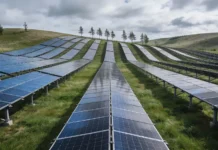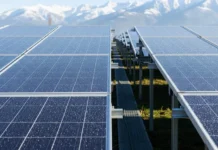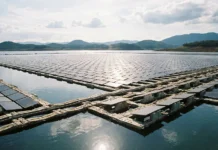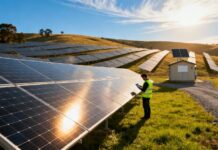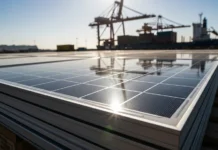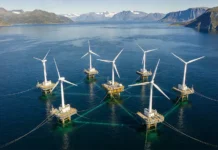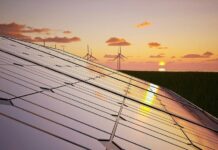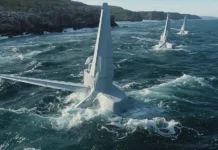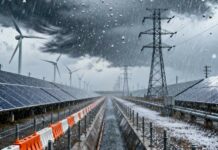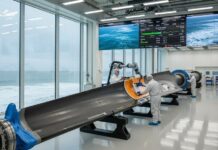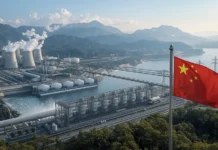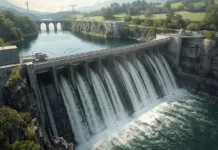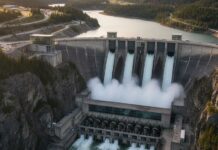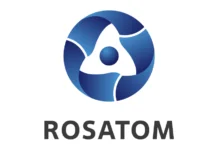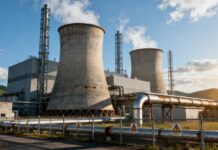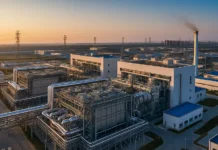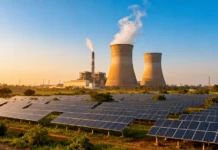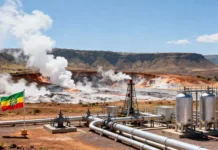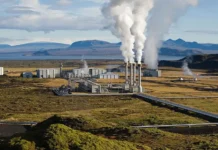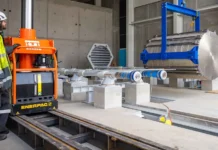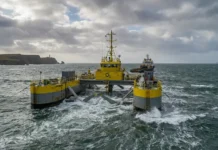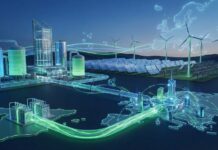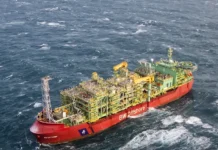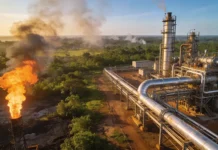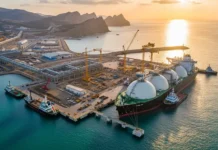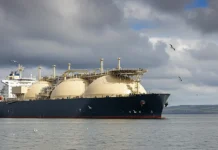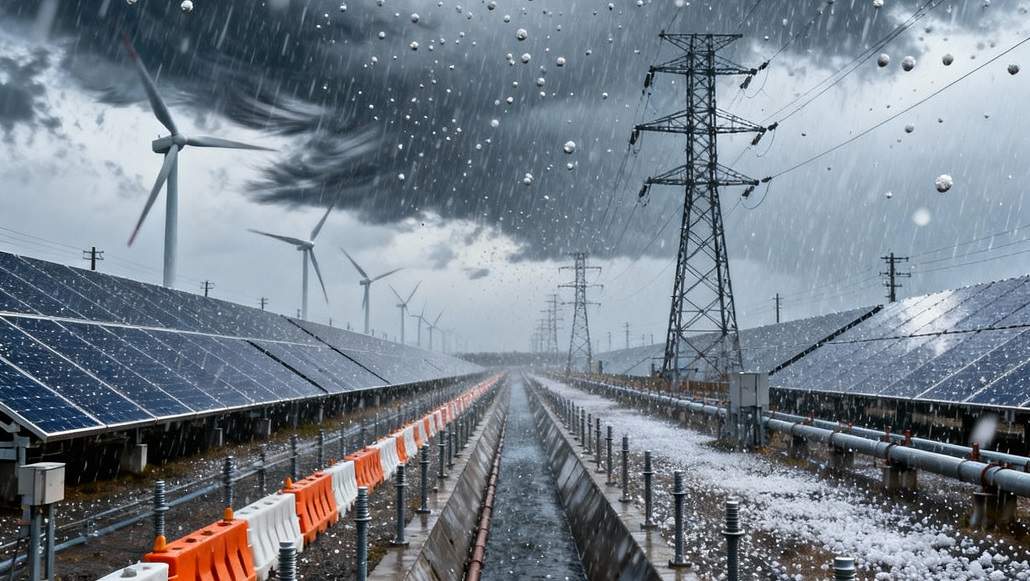Resilient Infrastructure for Extreme Energy Environments
The increasing frequency and severity of extreme weather events, combined with the expansion of energy infrastructure into challenging environments, has elevated the importance of resilient infrastructure energy industry systems that can withstand and recover from extraordinary conditions. Modern energy facilities must operate reliably in environments ranging from Arctic cold to desert heat, from corrosive coastal conditions to earthquake-prone regions, while maintaining the safety and performance standards that modern society demands. The development of comprehensive resilience strategies encompasses advanced materials, intelligent monitoring systems, and adaptive design approaches that ensure energy infrastructure can function reliably under the most demanding conditions.

Understanding Extreme Energy Environment Challenges
Climate-Driven Infrastructure Stress
Climate change is intensifying the challenges facing energy infrastructure worldwide, with 2024 marking the hottest year on record and extreme weather events becoming increasingly frequent and severe. Power plants and transmission systems now face temperature extremes that exceed historical design parameters, with some facilities experiencing unprecedented heat stress that challenges conventional materials and protection systems.
The economic impact of climate-related infrastructure failures has reached critical levels, with cooling demand during heatwaves contributing to massive increases in electricity demand and fossil fuel generation. In 2024, China experienced a 9% increase in electricity demand during heatwaves, with coal generation increasing by 4.4% to meet the surge. Similar patterns occurred in the United States and India, highlighting the global nature of climate-related infrastructure stress.
Extreme weather events including hurricanes, flooding, and severe storms create conditions that can overwhelm conventional protection systems. The increasing intensity of these events demands infrastructure designs that can withstand forces and conditions that exceed historical precedents while maintaining operational capability during and after extreme events.
Environmental Degradation and Chemical Exposure
Energy infrastructure increasingly operates in environments contaminated by industrial activities, where chemical exposure presents ongoing challenges to material integrity and system performance. Corrosive atmospheres containing salt spray, industrial chemicals, and contaminated groundwater can rapidly degrade conventional protection systems, leading to premature failure and safety hazards.
The expansion of energy infrastructure into previously undeveloped areas exposes facilities to environmental conditions including mineral-rich soils, volcanic activity, and extreme temperature variations that challenge conventional design approaches. These environments demand specialized materials and protection systems that can maintain performance under conditions that would destroy conventional systems.
Marine and coastal energy installations face particularly aggressive conditions where salt spray, tidal action, and storm surge create environments that rapidly degrade conventional materials. The increasing development of offshore wind and tidal energy systems expands exposure to these challenging conditions while demanding unprecedented levels of reliability and longevity.
Advanced Materials for Extreme Conditions
Corrosion-Resistant Protection Systems
The development of advanced corrosion-resistant materials has revolutionized protection capabilities in extreme energy environments. Modern stainless steel alloy systems, particularly Type 316 with enhanced nickel and molybdenum content, provide exceptional corrosion resistance across pH ranges from 2 to 12 while maintaining structural integrity under mechanical stress. These alloys demonstrate superior performance in marine environments, chemical exposure conditions, and high-temperature applications.
Advanced polymer systems including reinforced thermoplastic and cross-linked polyethylene formulations provide chemical resistance that exceeds conventional materials by orders of magnitude. These materials maintain flexibility and impact resistance while providing protection against aggressive chemicals including acids, alkalis, solvents, and petroleum products that can rapidly destroy conventional protection systems.
Fiberglass reinforced plastic (FRP) conduit systems offer the broadest range of corrosion resistance among available electrical conduit materials. These systems utilize epoxy resin matrices that provide exceptional chemical resistance while maintaining mechanical strength and electrical insulation properties. The manufacturing process, involving tension-winding of fiberglass strands impregnated with epoxy resin, creates composite structures that exceed the performance of individual components.
High-Performance Environmental Protection
Advanced environmental protection systems now incorporate multiple protective mechanisms that address diverse exposure conditions simultaneously. Multi-layer protection approaches combine rigid outer shells with flexible inner cores, providing both impact resistance and environmental sealing. These systems accommodate thermal expansion and mechanical stress while maintaining environmental protection integrity.
Specialized protective coatings and treatments provide enhanced resistance to specific environmental challenges including ultraviolet radiation, thermal cycling, and chemical exposure. Advanced fluoropolymer coatings provide exceptional chemical resistance and thermal stability while maintaining flexibility across extreme temperature ranges.
The integration of nano-materials and molecular-level protective treatments creates surfaces that actively resist environmental degradation. These advanced treatments can provide self-cleaning capabilities, enhanced chemical resistance, and improved mechanical properties that extend system lifetime under extreme conditions.
Intelligent Monitoring and Adaptive Systems
Real-Time Environmental Assessment
Modern resilient infrastructure incorporates comprehensive environmental monitoring systems that provide continuous assessment of conditions that could affect system performance. Advanced sensor networks monitor parameters including temperature, humidity, chemical exposure, vibration, and structural stress to provide early warning of developing problems.
Distributed sensing technologies enable monitoring along entire infrastructure systems, providing detailed assessment of local conditions and their effects on system components. Fiber optic sensing systems can detect temperature variations, strain, and acoustic events with meter-level resolution, enabling rapid identification of developing problems.
The integration of artificial intelligence and machine learning technologies enables predictive assessment of environmental impacts and system responses. These systems analyze historical data, current conditions, and predictive models to anticipate problems and optimize system performance under changing environmental conditions.
Adaptive Response Capabilities
Advanced resilient infrastructure systems incorporate adaptive capabilities that enable automatic adjustment to changing environmental conditions. Dynamic load management systems can redistribute electrical loads to avoid stress concentrations while maintaining system performance. These systems optimize performance while protecting critical components from overload conditions.
Self-healing materials and systems represent the cutting edge of adaptive infrastructure technology. These systems can automatically repair minor damage while providing notification of maintenance requirements, ensuring continued operation even when subjected to conditions that would damage conventional systems.
The integration of automated isolation and rerouting capabilities enables infrastructure systems to continue operating even when individual components are damaged or compromised. These systems can automatically reconfigure power distribution, isolate damaged sections, and maintain service to critical loads during extreme events.
Design Strategies for Extreme Environment Resilience
Redundancy and Fault Tolerance
Resilient energy infrastructure incorporates multiple levels of redundancy that ensure continued operation even when individual components fail. These approaches include redundant power paths, backup protection systems, and emergency isolation capabilities that maintain safety and functionality under extreme conditions.
Advanced fault tolerance designs enable systems to continue operating at reduced capacity even when subjected to damage that would completely disable conventional systems. These designs incorporate graceful degradation approaches that prioritize critical functions while maintaining safety under all conditions.
The integration of modular design approaches enables rapid replacement of damaged components while minimizing system downtime[84][95]. Standardized interfaces and quick-disconnect capabilities facilitate emergency repairs and maintenance under challenging conditions.
Climate-Adaptive Infrastructure Design
Modern infrastructure design incorporates climate projections and extreme weather scenarios that exceed historical precedents. These designs anticipate future conditions including increased temperatures, more severe storms, and changing precipitation patterns that will affect infrastructure performance throughout system lifetimes.
Nature-based solutions including constructed wetlands, vegetation barriers, and natural drainage systems provide enhanced resilience while supporting environmental sustainability objectives. These approaches can reduce infrastructure stress while providing additional benefits including habitat creation and carbon sequestration.
The integration of passive protection systems reduces dependence on active monitoring and control systems that may be vulnerable during extreme events. These systems utilize design features including thermal mass, natural ventilation, and gravity-driven drainage that continue functioning even when power systems are compromised.
Economic Considerations and Lifecycle Optimization
Cost-Benefit Analysis of Resilient Design
Investment in resilient infrastructure provides substantial economic benefits through reduced maintenance costs, extended equipment lifespans, and avoided outage costs. Advanced materials and protection systems require higher initial investment but provide significant lifecycle cost advantages through reduced maintenance requirements and extended service life.
Risk mitigation through resilient design reduces insurance costs and liability exposure while enhancing system reliability. The integration of comprehensive monitoring and predictive maintenance capabilities enables optimization of maintenance scheduling and resource allocation.
Performance optimization through resilient design enables enhanced operational efficiency and capacity utilization. Systems that can operate reliably under extreme conditions can maintain higher capacity factors and provide more consistent power generation.
Sustainable Resilience Approaches
The development of sustainable resilient infrastructure addresses both environmental performance and long-term economic considerations. Advanced materials incorporating recycled content and bio-based components provide environmental benefits while maintaining performance under extreme conditions.
Energy-efficient resilient infrastructure reduces operational costs while supporting sustainability objectives[98]. The integration of renewable energy sources with resilient infrastructure creates systems that provide both environmental benefits and enhanced reliability.
Future Developments in Resilient Infrastructure
Emerging Technologies and Materials
Next-generation resilient infrastructure will incorporate advanced technologies including quantum sensing, artificial intelligence, and autonomous maintenance systems. These technologies will provide unprecedented capabilities for monitoring, analysis, and response to extreme conditions.
The development of bio-inspired materials and systems offers new approaches to resilience that mimic natural adaptation mechanisms. These systems can provide self-repair capabilities, adaptive responses, and enhanced environmental compatibility.
Integration with Smart Grid Technologies
The future of resilient energy infrastructure will be characterized by deep integration with smart grid technologies that enable coordinated response to extreme events. These systems will provide distributed intelligence and autonomous operation capabilities that enhance resilience across entire power systems.
Advanced communication and control systems will enable rapid coordination between distributed infrastructure components during extreme events. These systems will support mutual aid and resource sharing that enhances overall system resilience.
The evolution toward fully resilient energy infrastructure represents a fundamental shift in how society approaches critical infrastructure design and operation. As extreme weather events become more frequent and severe, resilient infrastructure will become essential for maintaining the reliable energy systems that modern society requires. The integration of advanced materials, intelligent monitoring, and adaptive design approaches will establish new standards for infrastructure resilience that ensure energy systems can continue operating safely and reliably under the most challenging conditions imaginable.


